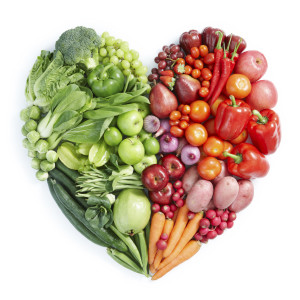 Crisp carrots and asparagus. Glistening tomatoes. Firm potatoes. You know fresh food when you see it—and when you taste it. So how can you ensure that your food retains the highest nutritional value when you store and cook it?
Crisp carrots and asparagus. Glistening tomatoes. Firm potatoes. You know fresh food when you see it—and when you taste it. So how can you ensure that your food retains the highest nutritional value when you store and cook it?
Well, it depends on who you talk to. Experts don’t always agree. However, there are some general rules of thumb that will ensure that the food you eat is as chock full of all of those healthy enzymes, vitamins and minerals as possible.
Eat your food soon after you buy it. Most of us store our food too long, especially if we buy large quantities at those low-cost bulk food stores. But time, light, heat and air are enemies of nutrients. Just the process of transporting food from the farm to your local grocery store—which can vary from days to weeks—has already reduced some of the nutritional value of those foods. Buy small quantities of fresh food locally (especially from your local farmer’s market), use it soon after purchase, and then replenish your stock as you need it.
Store food properly. When properly stored, most fresh vegetables and fruit “last” for one to two weeks without losing too much of their nutritional value. Veggies are best kept in the refrigerator in airtight containers. Vegetables like peppers, squash, celery and green beans, however, can last up to a month. Root vegetables, such as carrots, turnips and radishes, will keep up to eight weeks. And, beets and sweet potatoes are good for up to ten weeks. Fruits, once they are ripe, are best kept out of the sun, in a cool spot with less light.
Cook food as quickly as possible. Cooking, no matter what the method, generally leaches vitamins and minerals out of food. That’s why some experts say eating “raw” foods is best. However, there are cases when cooking releases nutrients, especially antioxidants, such as with tomatoes, asparagus, and carrots.
The general rule about cooking is that the shorter a food is exposed to heat, the better it retains a high concentration of nutrients. Steaming is one of the best methods of healthful cooking. However, since some of the nutrients will end up in the water, to get the most from your food find a way to incorporate that liquid into the meat. Adding the broth to a side dish like couscous or rice will add more flavor. The jury is still out on microwaving—while it cooks food quickly, it also subjects it to high heat. Plus, it may change the molecular structure of food, and experts disagree on whether that is harmful or not.
Only reheat once. Got leftovers? It’s fine to reheat them as long as you do it as quickly as possible with the least amount of heat. And once is enough. A second or third reheating is sure to degrade that food to the point where not many of the nutrients are left.
Bake meats. The most healthful way to cook fish, chicken, and other meats is in the oven. Follow cooking directions heat the meat enough to kill bacteria, but don’t overcook. Doing so degrades nutrients. And, if there is liquid left over from the cooking process, work it into the meal to utilize all the nutrients that it contains. Just like the vegetable broth, add the broth from meat to enhance the flavor of a side dish like couscous, pasta, green beans or broccoli.
The best way to boil. If you prefer your veggies boiled instead of steamed, here’s a tip for keeping the nutrients in the food instead of in the water. Heat the water to boiling first, then plunge the veggies in. They’ll cook more quickly this way. The less time they sit in the water, the fewer nutrients that leach out. Then, as you know by now, use the nutrient-infused water in your meal or use it to make soup stock.
Bon appetit! Here’s to a delicious—and healthy—meal.
The doctor of the future will give no medication, but will interest his patients in the care of the human frame, diet and in the cause and prevention of disease.
– Thomas A Edison
; ?>/images/soniaSmall.png)
; ?>/images/facebook.png)